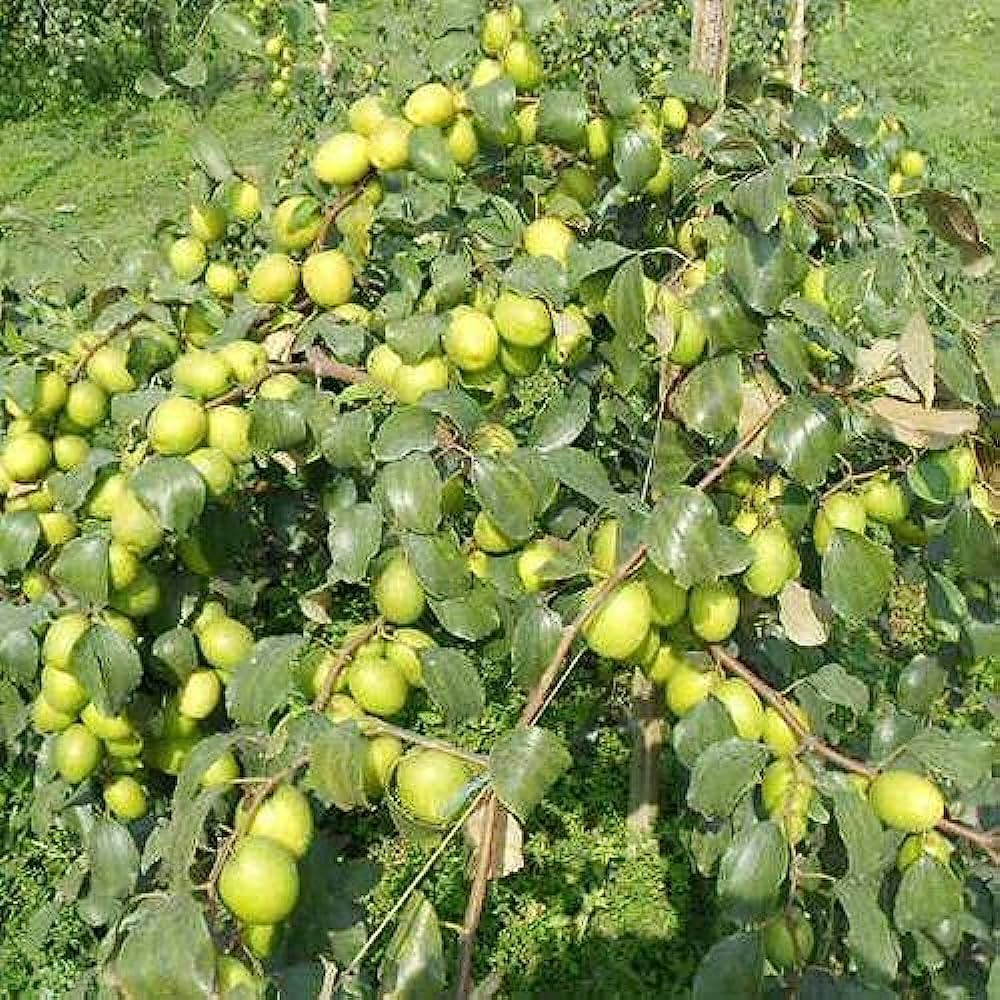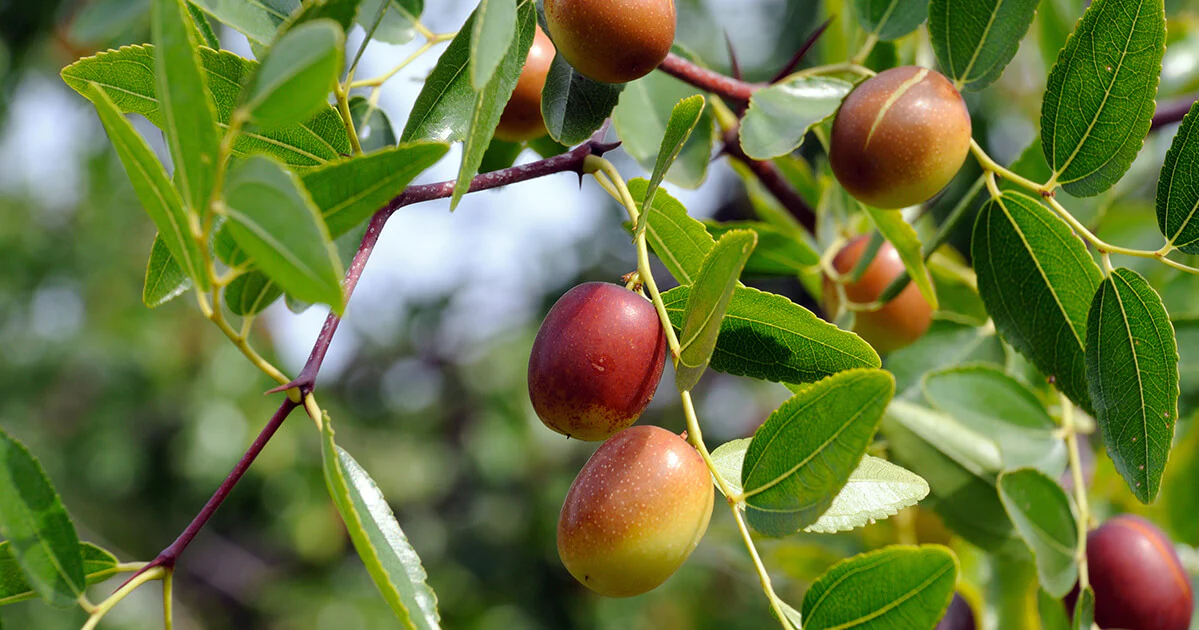Exploring the Nutritional and Medicinal Marvels of Atulya Vanam's Ber Tree: A Comprehensive Guide
The Ber tree (Ziziphus mauritiana), also known as Indian jujube or "Ber," is a tree deeply rooted in Indian culture, offering a treasure trove of benefits through its leaves, fruit, bark, roots, and flowers.
In this detailed blog, we embark on a captivating journey to uncover the myriad uses of the Ber tree across various medical systems, including Modern Medicine, Ayurveda, Unani, Homeopathy, Siddha, and its versatile applications. Additionally, we delve into the diverse varieties of Ber found across India.
Medicinal Value
Modern Medicine:
Fruit (Ber): Ber fruits are rich in vitamins, minerals, and dietary fiber, contributing to digestive health, immunity, and overall well-being.
Antioxidants: Ber fruits contain antioxidants that combat oxidative stress, promoting cellular health and longevity.
Ayurveda:
Fruit (Ber): Ayurveda values Ber fruits for their sweet and sour taste, offering cooling properties that balance pitta dosha.
Ber Leaves: Ber leaves are used in Ayurvedic remedies to address digestive disorders and support oral health.
Unani:
Fruit (Ber): Unani recognizes Ber as a nourishing fruit, appreciated for its nutritional value and potential energy-boosting effects.
Homeopathy:
Fruit (Ber): Ber may find its place in homeopathic remedies targeting specific symptoms or health concerns.
Siddha:
Fruit (Ber): In Siddha medicine, Ber fruits are believed to aid digestion and contribute to overall vitality.
General Uses
Delicious Snack: Ber fruits are enjoyed fresh or dried as a flavorful and nutritious snack.
Traditional Delicacies: Ber fruits are used in traditional Indian cuisine, lending their unique flavor to jams, chutneys, and pickles.
Digestive Aid: Ber leaves and fruits are known for their potential to alleviate digestive discomfort and promote regular bowel movements.
Natural Sweetener: Dried Ber fruits are used as a natural sweetener and flavor enhancer in culinary creations.
Ornamental and Shade Tree: The Ber tree’s attractive foliage and fruit make it a popular choice for ornamental planting and providing shade.
Varieties of Ber in India:
Gola Ber: Renowned for its large size and sweetness, Gola Ber is a popular variety often enjoyed fresh.
Chhuhara Ber: Characterized by its elongated shape and wrinkled texture, Chhuhara Ber is commonly dried and used in traditional recipes.
Umran Ber: Recognized for its exquisite flavor and crispiness, Umran Ber is often consumed fresh or used in culinary delights.
Kaithli Ber: Kaithli Ber boasts a delightful balance of sweetness and tartness, making it a sought-after choice for fresh consumption.



More about Ber trees
Ber trees (Ziziphus mauritiana) are intriguing and culturally significant trees with a range of extraordinary qualities. Here are some intriguing facts about ber trees:
Cultural Heritage: Ber trees have cultural and religious significance in various societies, often associated with festivals and rituals.
Multiple Names: Ber trees are known by different names in various languages and regions, such as “Indian jujube” or “Indian plum.”
- Fruit Diversity: Ber fruits come in a range of shapes, sizes, and flavors, from sweet to sour and often enjoyed as fresh snacks or in preserves.
- Nutrient-Rich: Ber fruits are a source of vitamins (such as vitamin C), minerals (like iron and calcium), and dietary fiber.
- Traditional Medicine: Ber leaves, fruits, and bark have been used in traditional medicine for potential digestive, anti-inflammatory, and anti-diabetic benefits.
- Culinary Versatility: Ber fruits are consumed fresh, dried, or used in jams, jellies, chutneys, and pickles.
- Wildlife Attraction: The fruit-bearing ber trees attract a range of wildlife, including birds, insects, and mammals.
- Drought Resistance: Ber trees are well-adapted to arid and semi-arid regions, making them valuable in dryland agriculture.
- Shade and Fodder: Ber trees provide shade for livestock and are a source of fodder for animals.
- Land Conservation: Ber trees are used for soil conservation and erosion control due to their deep-rooted nature.
- Traditional Crafts: The strong and durable wood of ber trees is used for making tools, agricultural implements, and handicrafts.
- Ornamental Value: Ber trees can be cultivated for their ornamental appearance, with their vibrant fruits and decorative foliage.
- Global Distribution: Ber trees are native to South Asia but have been introduced to various parts of the world due to their cultural and agricultural value.
- Edible Oil: The seeds of ber fruits contain oil that can be extracted and used for cooking and cosmetics.
- Land Reclamation: Ber trees play a role in land reclamation and afforestation efforts, particularly in degraded areas.
- Traditional Wisdom: Ber trees have been valued for centuries for their nutritional, medicinal, and ecological benefits.
- Climate Adaptation: Ber trees are resilient and can thrive in challenging environmental conditions, making them valuable in climate change adaptation strategies.
These extraordinary facts highlight the diverse roles that ber trees play in various aspects of human life, including culture, nutrition, traditional medicine, and sustainable land use.
Conclusion
The Ber tree, a symbol of resilience and nutritional wealth, transcends its role as a provider of fruit. Its leaves, fruit, bark, roots, flowers, and multifaceted applications intertwine with a rich spectrum of medical systems and cultural practices. From Ayurveda’s ancient wisdom to modern medical validation, the Ber tree’s virtues flourish. By embracing the harmony of traditional insight and contemporary exploration, we unveil the countless ways in which the Ber tree enriches our lives—nurturing not only our bodies but also our cultural heritage and the flourishing vitality of our surroundings.
